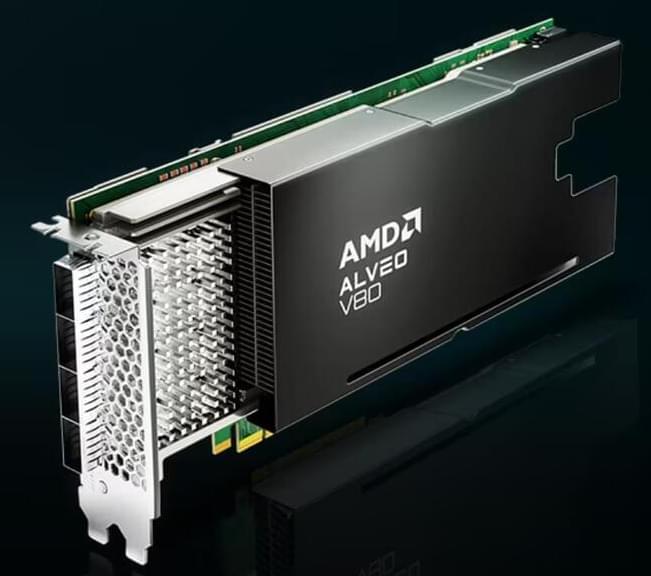The FDA has allowed billionaire Elon Musk’s Neuralink to implant its brain chip in a second person after it proposed a fix for a problem that occurred in its first patient. Correspondent Brooke Shafer joins \.
Category: computing – Page 265


Neuralink to implant 2nd human with brain chip as 85% of threads retract in 1st
“Neuralink to implant 2nd human with brain chip as 85% of threads retract. Neuralink’s first patient, 29-year-old Noland Arbaugh, opened up about the roller-coaster experience. ” I was on such a high and then to be brought down that low. It was very, very hard,” Arbaugh said. ” I cried.” What a disaster!
Algorithm tweaks made up for the loss, and Neuralink thinks it has fix for next patient.
A connectomic study of a petascale fragment of human cerebral cortex
We acquired a rapidly preserved human surgical sample from the temporal lobe of the cerebral cortex. We stained a 1 mm3 volume with heavy metals, embedded it in resin, cut more than 5,000 slices at ∼30 nm and imaged these sections using a high-speed multibeam scanning electron microscope. We used computational methods to render the three-dimensional structure containing 57,216 cells, hundreds of millions of neurites and 133.7 million synaptic connections. The 1.4 petabyte electron microscopy volume, the segmented cells, cell parts, blood vessels, myelin, inhibitory and excitatory synapses, and 104 manually proofread cells are available to peruse online. Many interesting and unusual features were evident in this dataset. Glia outnumbered neurons 2:1 and oligodendrocytes were the most common cell type in the volume. Excitatory spiny neurons comprised 69% of the neuronal population, and excitatory synapses also were in the majority (76%). The synaptic drive onto spiny neurons was biased more strongly toward excitation (70%) than was the case for inhibitory interneurons (48%). Despite incompleteness of the automated segmentation caused by split and merge errors, we could automatically generate (and then validate) connections between most of the excitatory and inhibitory neuron types both within and between layers. In studying these neurons we found that deep layer excitatory cell types can be classified into new subsets, based on structural and connectivity differences, and that chandelier interneurons not only innervate excitatory neuron initial segments as previously described, but also each other’s initial segments. Furthermore, among the thousands of weak connections established on each neuron, there exist rarer highly powerful axonal inputs that establish multi-synaptic contacts (up to ∼20 synapses) with target neurons. Our analysis indicates that these strong inputs are specific, and allow small numbers of axons to have an outsized role in the activity of some of their postsynaptic partners.
The authors have declared no competing interest.


Decoding the business of brain–computer interfaces
Here’s a nice article discussing the progress of the brain-computer interface industry, some existing startups in the space, and where the industry may go in the future.
Fifty years after the term brain–computer interface was coined, the neurotechnology is being pursued by an array of start-up companies using a variety of different technologies. But the path to clinical and commercial success remains uncertain.

Next-Gen Loongson 8-Core CPUs To Feature Performance On Par With Intel’s 12th Gen Core i7 & Core i5 Chips
Loongson has revealed that its next-gen CPUs will be able to match Intel’s 12th Gen Core i7 & Core i5 CPUs, propelling the domestic Chinese PC market to new heights.
Loongson CEO States Up To 50% Performance Increase Possible On Next-Gen 8-Core CPUs, Reaching Intel 12th Gen Levels
During an interview with Loongson’s CEO, Hu Weiwu, with local Chinese media, it was highlighted that the upcoming CPUs from the chipmaker are going to be a major upgrade. Currently, Loongson offers its 8-core 3A6000 CPU which offers performance close to Intel’s 10th Gen & AMD’s Zen 2 core architectures. The company also recently previewed its 3B6600 and 3B7000 CPUs for PCs that use an 8-core design and are built on the same process node as the 3A6000 CPUs.


AMD Announces Mass-Production Of The Alveo V80 Compute Accelerator, $9495 Price Tag
AMD has announced mass production of its Alveo V80 compute accelerator, the firm’s newest HPC product targeted at memory-intensive workloads.
AMD’s Alveo V80 Targets Memory-Intensive HPC Workloads Through Heterogeneous Integration Courtesy of Versal HBM
The Alveo V80 was a silent announcement by AMD, but it does indeed pack a punch. This card targets catering to mid-tier workloads that are heavily dependent on memory utilization and expects to witness massive adoption in the fields of HPC, Networking, and Storage Applications. The FPGA-based accelerator looks to make strides in the industry through its competitive performance and the price tag it comes with, which we’ll discuss later.
